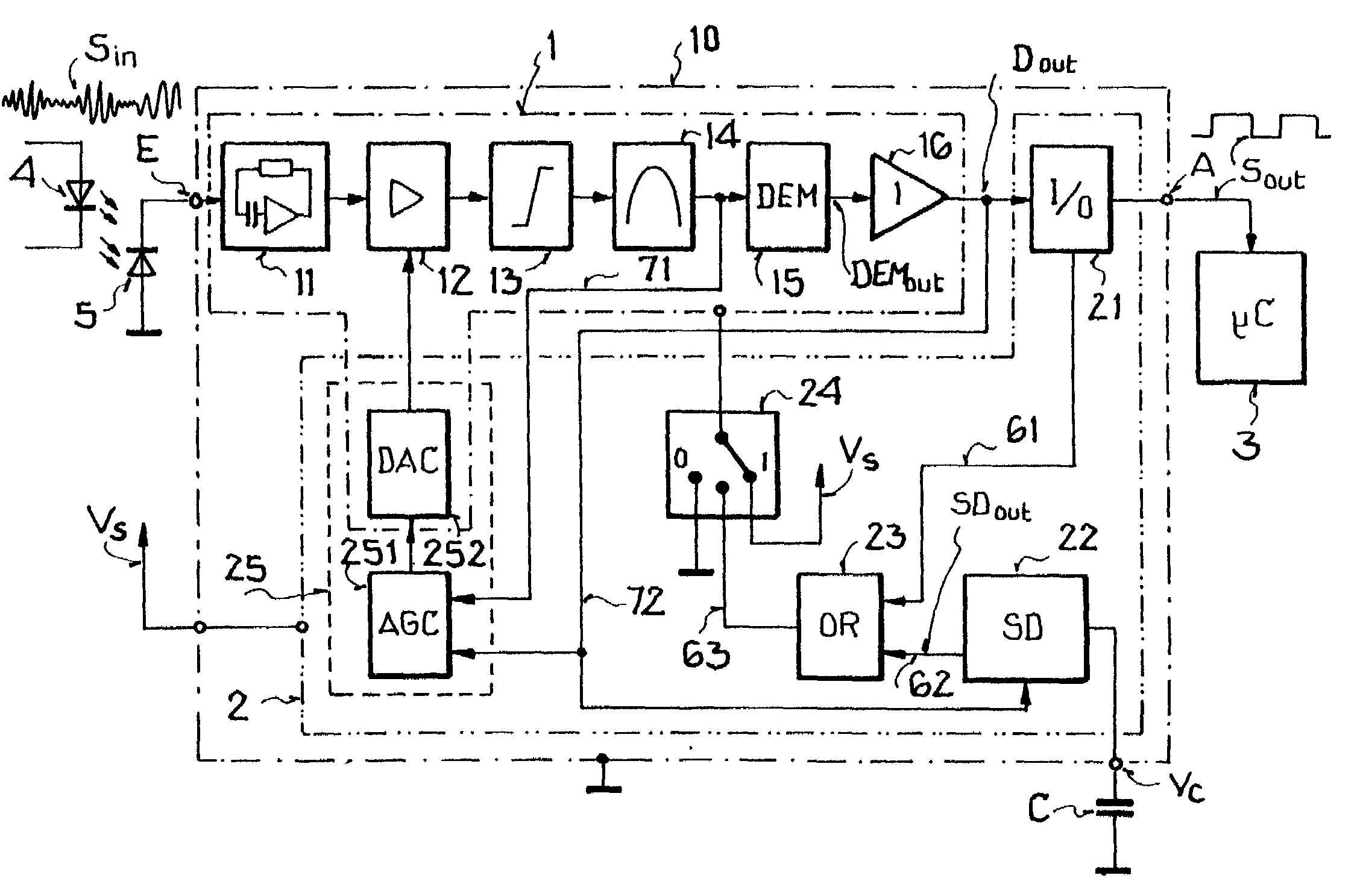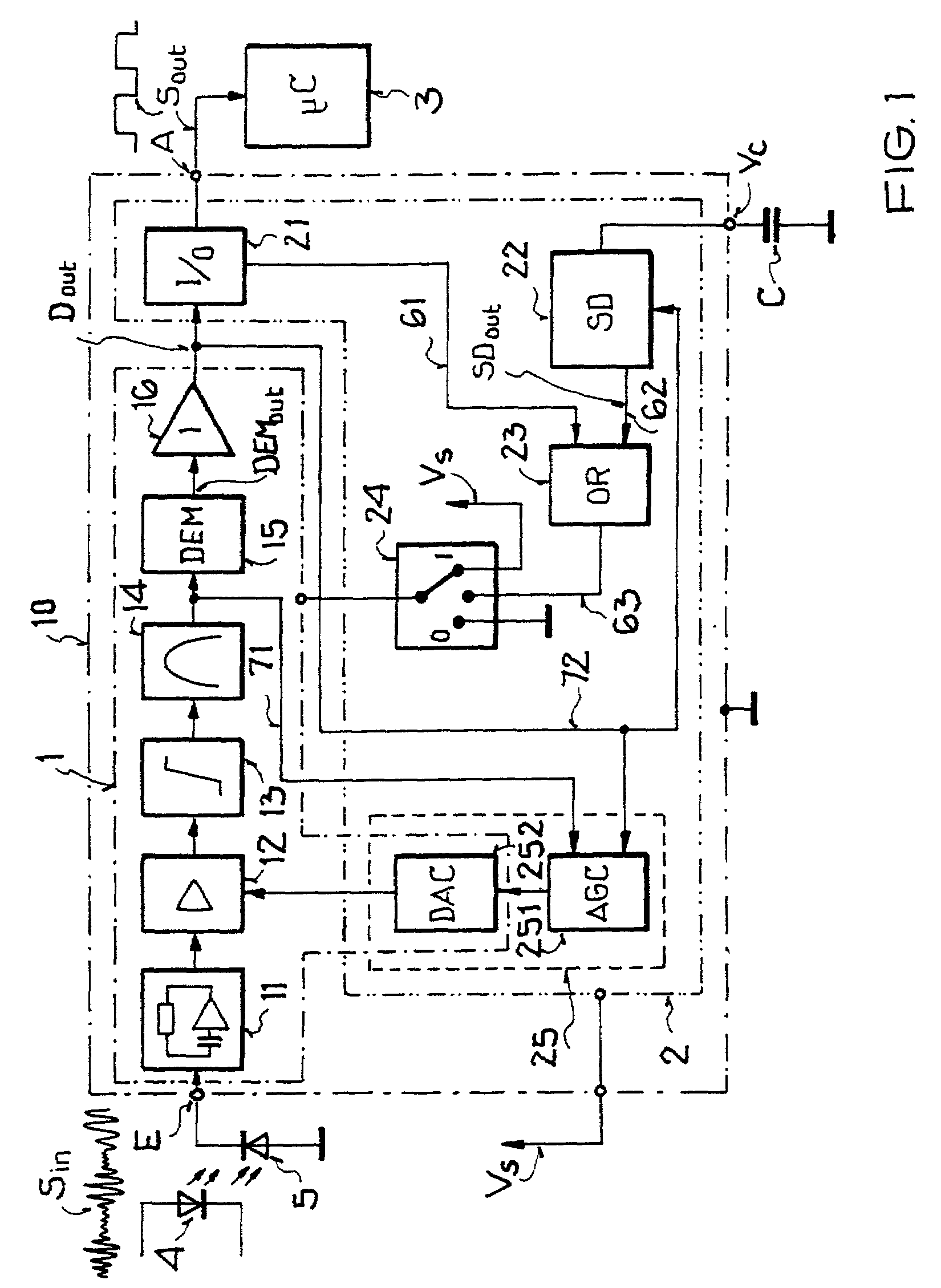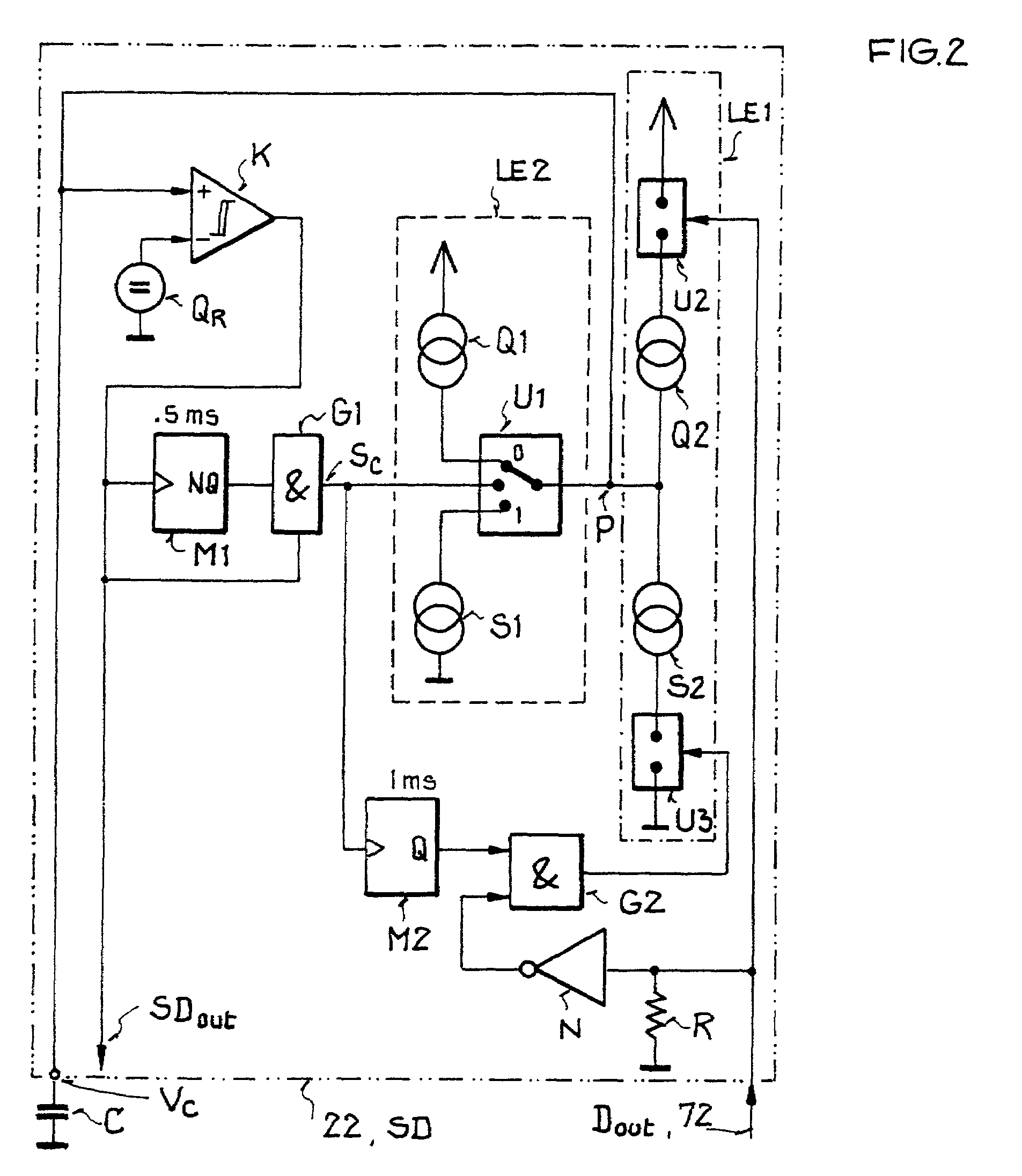Energy-saving method for the wireless reception of data modulated on a carrier signal
a data modulation and energy-saving technology, applied in the field of energy-saving methods for the wireless reception of data modulated on a carrier signal, can solve the problems of low current consumption, inability to achieve maximum sensitivity in an interference-free environment, and inability to correct the reception of useful signals with an increased bit error rate, etc., to achieve the effect of reducing current consumption
- Summary
- Abstract
- Description
- Claims
- Application Information
AI Technical Summary
Benefits of technology
Problems solved by technology
Method used
Image
Examples
Embodiment Construction
[0020]FIG. 1 shows a block diagram of a receiver circuit 10 and its environment. The carrier modulated data emitted by an optical sender diode 4 is received by a photodiode 5 as infrared pulse packets. These infrared pulse packets striking the photodiode 5 with a carrier frequency of 38 kHz for example are converted into electrical current signals SIN. They are available at the input connector E of the receiver circuit 10 These electrical current signals SIN are fed to an input circuit 11 working as a transimpedance amplifier which amplifies the current signals SIN and converts them into voltage signals. In the following signal processing component, these voltage signals are amplified by a control amplifier 12, limited by a limiter 13, and then filtered in a bandpass filter 14.
[0021]The signal limitation by means of the limiter 13 is required in order to avoid an overmodulation of the following bandpass filter 14 and to suppress pulse-shaped interference entering the receiver via a ...
PUM
 Login to View More
Login to View More Abstract
Description
Claims
Application Information
 Login to View More
Login to View More - R&D
- Intellectual Property
- Life Sciences
- Materials
- Tech Scout
- Unparalleled Data Quality
- Higher Quality Content
- 60% Fewer Hallucinations
Browse by: Latest US Patents, China's latest patents, Technical Efficacy Thesaurus, Application Domain, Technology Topic, Popular Technical Reports.
© 2025 PatSnap. All rights reserved.Legal|Privacy policy|Modern Slavery Act Transparency Statement|Sitemap|About US| Contact US: help@patsnap.com



